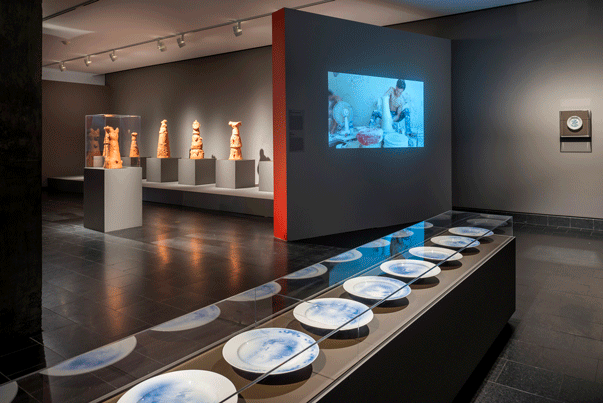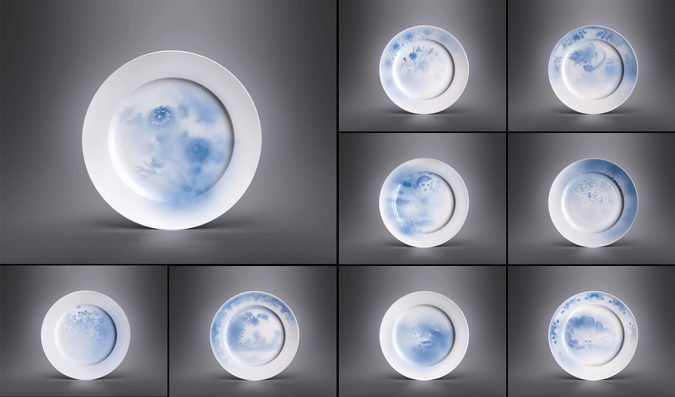Hua Jin's installation, The New White, at Montreal Museum of Fine Arts highlights how the mass production of Chinese ceramics due to foreign exoticism leads to a decline in artistic quality.

The exhibit is part of the 2017 Canada Council for the Arts New Chapter program, where artists were invited to choose an artifact from the museum and use it as inspiration. Jin chose a piece of porcelain from the Ming dynasty.
"Truth be told, there are very few Chinese artists here," Jin said in an interview with Arts Help. "I am trying my best to show Chinese culture, so I purposefully made the twelve plates so Westerners could come to know it."
Art can help push towards the United Nations Sustainable Development Goal for Reduced Inequalities by highlighting unique aspects of various cultures.
Jin said she wanted to show how mechanization and global demand change the artistry and cultural craft from the past to the present.
"During that era, everything was made by hand, and then it would be passed on for thousands of years," Jin said.
Jin added that plates from the past were all unique because they were made one at a time, but mechanization and mass production allows multiple designs to be constantly reproduced.
For her installation, she photographed images from various artifacts and blurred them using Photoshop to make the images look artificially worn. Then, she created the plates using machines.
"Mass production reduces the uniqueness," Jin said. "They make the traditional art and techniques disappear."

"Such new creations, often of poor quality, are the result of the high global demand that comes from foreign collectors' taste for the exotic as indicated by the traditional porcelain works in museum collections," exhibit curator Laura Vigo wrote.
"There's always exoticization through a sense of curiosity," Jin said. "Exotic, in my opinion, is not an inherently bad word."
However, she said that it is not possible to discuss exoticism without looking at both positive and negative cultural interactions, including the history of the Silk Road and British imperialism and colonialism in China.
"Colonialism and taking our things for museums is bad, but this also circulates Chinese culture," Jin said.
According to Jin, many Chinese ceramic treasures were lost due to colonization, but they were preserved in private Western family collections, allowing for later museum display.
“Because Chinese history has experienced many tumultuous times, there was a protective effect,” Jin said.
For example, the Cultural Revolution beginning in 1966 saw the destruction of many cultural Chinese items. The Four Olds Policy specifically targeted traditional ideas, customs, habits and culture, resulting in the destruction of churches, shrines, shops and libraries. Private homes were also searched, and personal heirlooms destroyed.
Jin said she grew up learning Chinese philosophy, so her art is primarily based on her way of thinking rooted in her upbringing. She added that there are fundamental differences between Western and Chinese art.
According to Jin, Chinese art is more about the artist's emotions and inner reflection, often depicted through nature imagery. At the same time, neoclassical Western oil paintings are typically related to Greek mythology or Biblical allegories.
"Everything has a story behind it," Jin said. But for Chinese watercolour based on literature and ancient poetry, "you can see how the poems paint a picture," she added.
"It still relates to stories, but mostly my understanding is that Chinese art acts more as a personal reflection," Jin said.
She added that Chinese art is about "小人物在大自然," or small people in big nature. Where neoclassical Western art focuses on individuals and their stories, Chinese art looks at the placement of oneself in the cosmos, reflecting Daoist philosophy.
While Jin said mass media can promote different cultures through more accessible channels and sharing art helps increase cross-cultural understanding, globalization can often negatively affect cultural distinctions.

"Globalization has a danger to individual cultures because there is more amalgamation and less uniqueness," she said.
She added that the Eurocentric focus in the West limits the ability to learn more about other cultures.
"If you live in one place, that one place can function as a frame of your knowledge of this world," she said. "But if you travel a lot, you move a lot, you see a lot, you experience a lot, and you will be expanding this frame."
"My vision is broader than before through my years of education here," she said. "Now the problem isn't if you can access different cultures; it's if you have an open mind to want to know different cultures."
See more of Hua Jin's work here.
